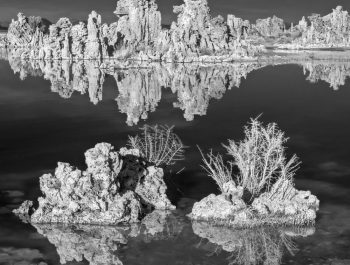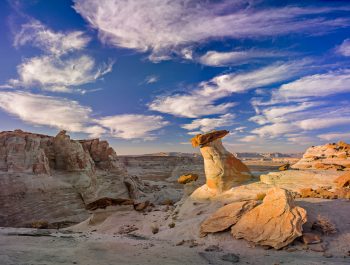Click, Rinse, Repeat The Virtues of Patience and Familiarity
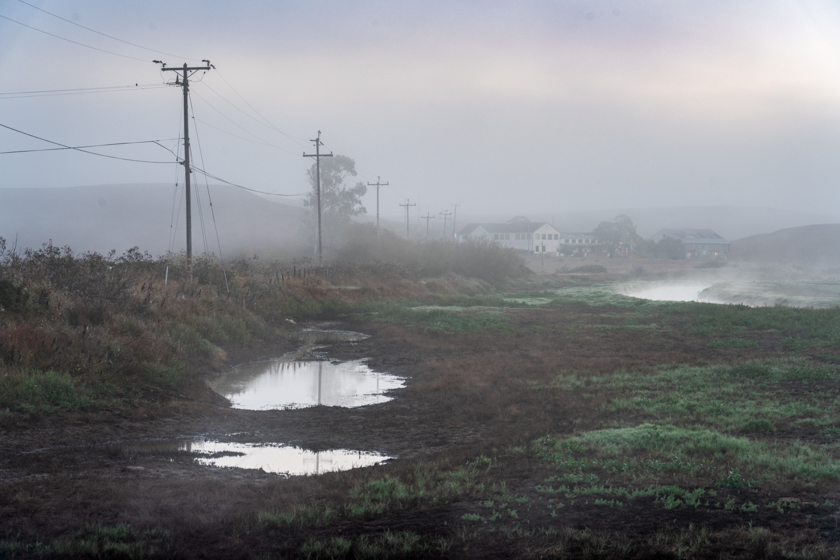
It is axiomatic in making portraits that knowing your subject can help produce a more revealing image. I have found the same is true regardless of the subject in front of the camera.
I work in landscapes, and for much of my life, that has meant going to interesting areas, spending some hours, maybe an afternoon, or if I’m lucky, a full weekend, making images. Even lengthier trips to more distant locations usually have meant drive-by image-making from location to location within the trip.

Over time I have found this approach limiting. What it offers in newness and excitement can be offset by a tendency to capture only the obvious. There is, I think, an enormous upside to visiting and revisiting a region. I don’t mean a couple of times. I mean as frequently as possible, over many years. And by “area,” I am thinking of blocks or square miles, not vast territories.
I have been “going small” in an area in northern California about an hour-plus drive north of where I live. It is a relatively flat area of ranches and dairy farms. These are family-sized operations that, in many cases, have been passed down through generations. Fortunately, much of this area has been protected from commercial and residential development through agricultural land trusts.
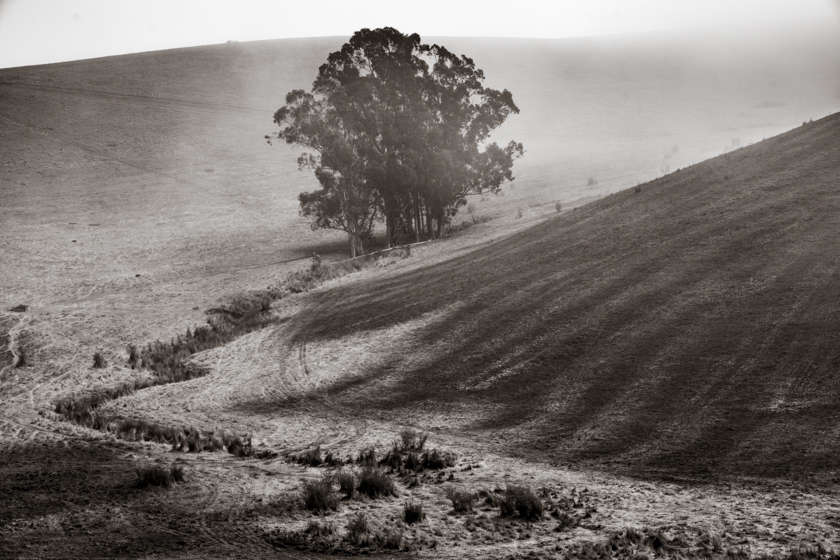
It is not a region of physical drama. Just the opposite: it is an area easy to pass through without noticing much. It is pleasant rather than eye-popping. Brown pastures turn green in the spring. Undulating hills are punctuated by occasional rocky outcrops. Lower valleys can hide under ribbons of fog—wetlands and estuaries pulse with life after a rain.
But there are no breathtaking cliffs, waterfalls or mountains.
Looking at my images from 2016 when I first began photographing here and comparing them to more recent work has been a tutorial on myself, how I work, what I’ve learned, and why I was drawn here in the first place. Working on a same subject matter over time not only allows you to see a clear progression in work but an evolution in yourself as a photographer. Having dispensed with the obvious, you are forced to look harder and deeper.

Family history and convenience all played a role in my initial attraction. This region of maybe 10 square miles was on the way to a family beach cottage. Decades spent traversing this terrain was like learning a language as a child. It was all around me, and I was able to absorb it in a natural and unforced way. I wasn’t looking for images. My eyes and brain were chronicling the environment with no ulterior motive.
When I did bring my camera to the area in a serious way, it was as if sitting down to do a portrait of an old friend. I felt comfortable and familiar.
Looking at work over several recent years, I can see how my exploration progressed and my understanding deepened. I liken it to tuning a radio from scratchy reception to a clean, clear wavelength.
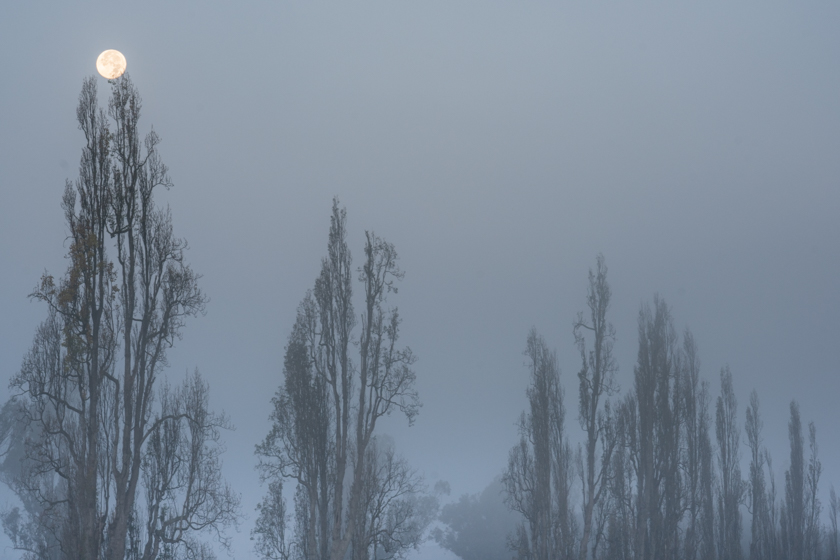
I learned the landscape from the ground up.
Initial images emphasized horizon lines and the big sky. Yet over time and after scores of visits, it was as if my eyes began to discover the foreground and its components, the shapes and textures of trees, creeks, and watering ponds, as well as the faces within the granite outcrops. Gradually, structures that suggest the human element have begun to creep in.
As I learned by seeing, vantage points changed from seeking sublime vistas that evidenced a grand beauty to telling details. I think about this multi-year effort now as the telling of a story. There is a big picture, and there are the essential details. Most recently, I have edged into showing the human element – not people per se, but their structures and handiwork. My goal is to suggest this is a region where people and nature have learned to live together.
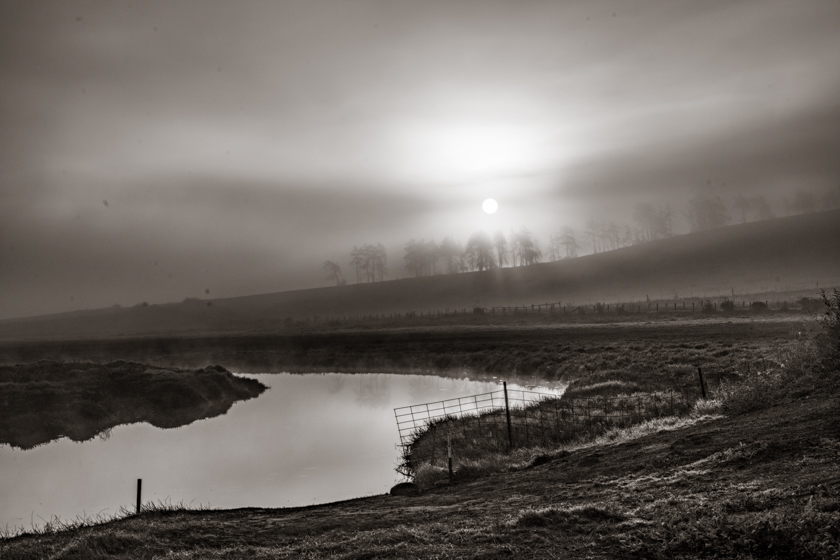
Through it, all of course is the light. That is what makes this place special and attracted me in the first place. Low lying fog is typical and during winter the dried pastures can become covered in frost. I am typically on the scene before dawn and usually gone shortly after sunrise. I cherish this time of day because it emphasizes shapes and layers more than literal objects.
One of my concerns has been that familiarity could dull my interest. Nope. I have found just the opposite. In practical terms, familiarity has allowed me to size up potential images far more efficiently. For instance, I can anticipate optimum vantage points for particular types of light because in most locations I have been there before, but at the wrong moment. I accept field trips now as potential scouting sessions knowing I will be back. Several of my favorite images are from specific locations I have visited and photographed numerous times. Each outing brought me closer and closer to an essence like peeling the layers of an onion.
This way of working is more relaxing and “in the moment.” The ones that “got away” are there for another day. I’m trying not so much to capture as to understand.
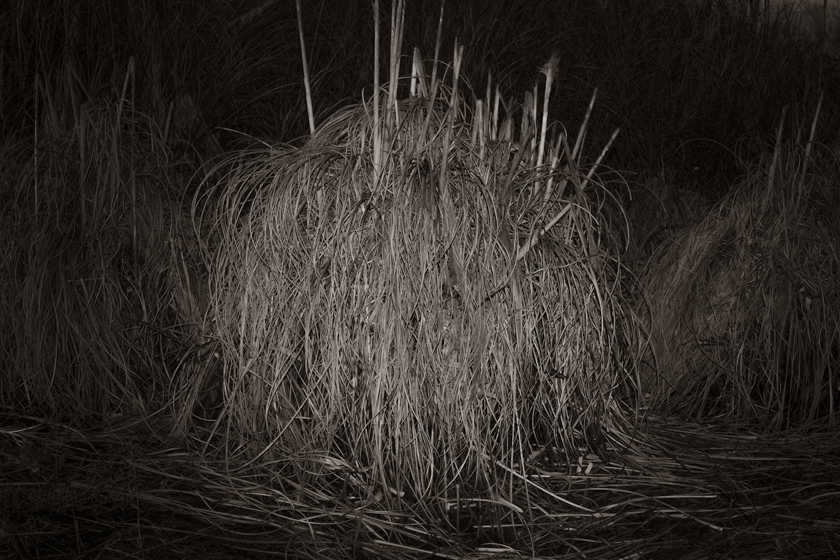
The video “My Octopus Teacher,” brought to my attention here on PhotoPXL, revolves around a free diver in South Africa who explores a single kelp forest every day for a year.
“People ask why are you going to the same place every day,” says the diver midway through the video. “But that’s when you see the subtle differences and that’s when you get to know the wild.”
I have found the same truism in photography.
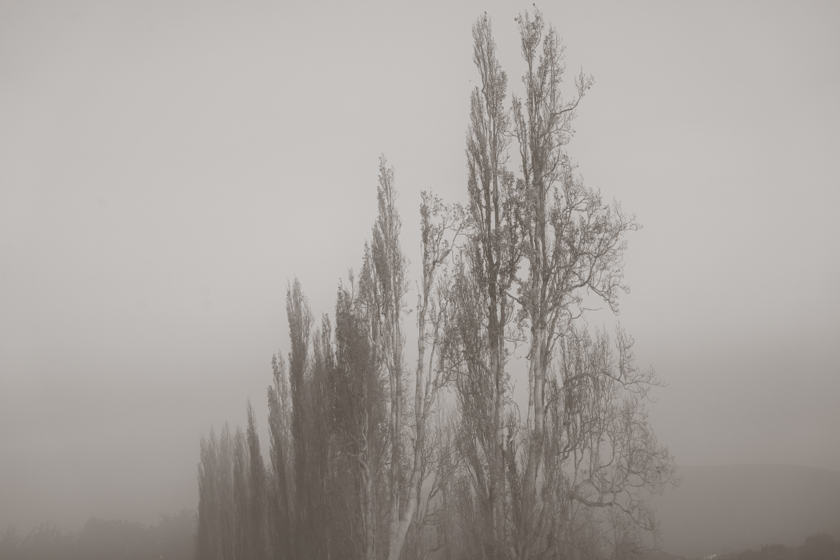
I spent two recent weeks in this area and arrived with some trepidation that the subject matter might begin to feel stale.
Then before dawn on the day after Halloween I found myself looking across a very familiar pasture with some pre-dawn mist hovering low to the ground. But there was something new and unexpected: A Blue Moon sat atop treetops like a beach ball balanced on outstretched fingers. That’s when I knew I would be back again.
Paul Van Slambrouck
November 2020
San Francisco, CA
I spent a career in journalism, mainly as a writer and editor and eventually in management positions before moving to academia where in recent years I have taught journalism and photography. All along the way, photography has been a secret obsession. I have migrated from film black and white to digital color and most recently a return to B&W. My central joy is the act of shooting itself. Being in the field as the sun comes and goes is a source of never ending enlightenment. I thank many teachers and mentors along the way, and especially Glen Fishback whose independent photography school started it all for me.







